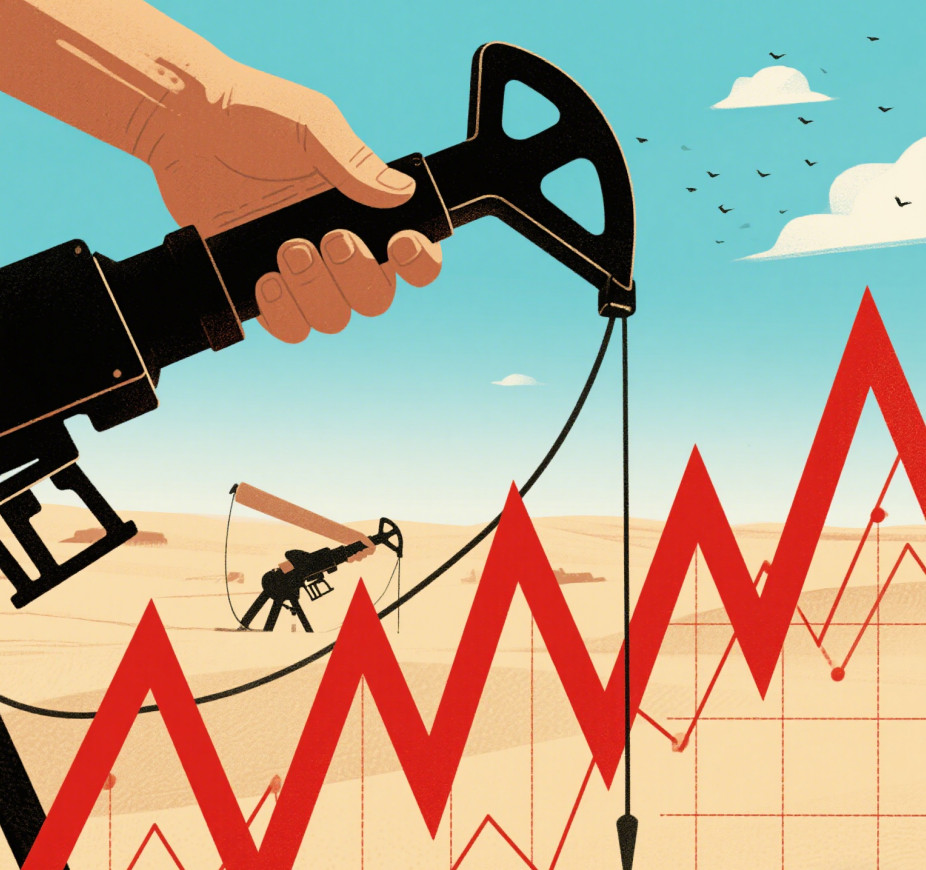
On April 25, 2025, the international crude oil market once again staged a geopolitical driven market scenario. The main Brent crude oil contract rose 0.57% during the day, closing at $66.5 per barrel, while WTI crude oil futures on the New York Mercantile Exchange also rose 0.80% to $62.77 per barrel. Behind this fluctuation is the triple effect of escalating tensions in the Middle East, intensifying global trade frictions, and OPEC+policy swings, reflecting the deep-seated contradictions in the energy market during the "low growth, high-risk" cycle.
Israel's military action plan against the southern Gaza Strip city of Rafa has become the direct trigger for this round of oil price hikes. Although the GDP growth rate in the United States slowed down to 1.6% in the first quarter, the market is more concerned about the risk of oil supply disruptions that may arise from the Middle East conflict. The Strait of Hormuz, as a crucial passageway for 30% of global crude oil transportation, would directly lead to a daily interruption of 2 million barrels of crude oil supply in the event of a military conflict. Geopolitical risk premium has become an important support for oil prices. In 2022, the Russia-Ukraine conflict pushed up the price of Brent crude oil to more than 120 dollars/barrel. Although the current situation in the Middle East is not at that time, the market's vigilance against the "Black Swan Event" has significantly increased. Data shows that the implied volatility index of Brent crude oil futures has risen to 35, far exceeding the level during the 2020 pandemic, indicating that speculative funds are accelerating their influx into the crude oil market to hedge risks.
The suppression of oil prices by the China US trade friction is more long-term. The Trump administration's proposed tariff adjustment plan for China may lower the tax rates on some goods, but still maintain excessively high tariffs on "strategic goods". This policy ambiguity has led global traders to accelerate the restructuring of their supply chains. China's imports of US crude oil have dropped to zero, while other Asian countries have increased their procurement volume, but rising transportation costs have resulted in actual procurement volumes far below market expectations. The impact of trade frictions on the global manufacturing industry is rebounding energy demand. The International Monetary Fund predicts that the global economic growth rate in 2025 will only be 2.7%, lower than the historical average. The Federal Reserve has lowered its expectations for US GDP growth and raised its inflation expectations, a combination of low growth and high inflation that directly suppresses crude oil consumption. According to data from the International Energy Agency, the growth rate of global oil demand has significantly decreased by 2025, with China's demand for refined oil products possibly experiencing a slight decline.
Against the backdrop of pressure on both supply and demand, OPEC+'s capacity adjustment strategy has become a key variable determining the direction of oil prices. Although the organization announced an increase in production, core oil producing countries such as Saudi Arabia maintained market balance through "technical production cuts". This strategy of "increasing on the surface and decreasing on the surface" reflects OPEC+'s strategic swing between market share and maintaining stable oil prices. The market's questioning of the credibility of OPEC+policies is intensifying. Data shows that global commercial crude oil inventories have risen to high levels. In this context, OPEC+'s production increase plan has been interpreted by the market as a compromise on Trump's demand to "lower oil prices", resulting in a significant decrease in net long positions in Brent crude oil futures.
The current crude oil market is caught in a triple game of policy expectations, financial liquidity, and supply and demand fundamentals. The capacity adjustment strategy of OPEC+and the global new energy transformation policy form a hedge. Although the organization is attempting to support oil prices by reducing production, the global energy transition is accelerating and weakening the elasticity of crude oil demand. Although the interest rate cut cycle in Europe and America has brought about loose liquidity, the geopolitical risk premium continues to push up the US dollar index, leading to a decrease in the actual purchasing power of crude oil. In the second quarter, global oil demand entered the traditional off-season, coupled with a decrease in costs for US shale oil companies, and market concerns about oversupply continue to ferment.
The fluctuation of Brent crude oil at $66.5 per barrel is essentially the result of the struggle between geopolitical risk premium and economic recession expectations. Whether oil prices can break through the current range in the future will depend on the progress of China US tariff negotiations, the effectiveness of OPEC+capacity policy implementation, and whether the Middle East conflict spills over to core oil producing areas. Against the backdrop of energy transition and geopolitical risks, the crude oil market may have entered a new normal of "low growth, high volatility", and investors need to be alert to severe fluctuations in key price ranges. Policy makers need to find a more delicate balance between energy security and low-carbon transformation to cope with this complex and ever-changing market environment.

YTN TV of South Korea reported on Tuesday (December 16) that the South Korean court plans to make a ruling on the charges of former President Yoon Suk Yeol for obstructing justice on January 16, 2026.
YTN TV of South Korea reported on Tuesday (December 16) tha…
On December 7, a new round of intense military conflict bro…
Recently, US media disclosed that the Pentagon is planning …
From three launch failures and a brush with bankruptcy to n…
Recently, a major piece of news has emerged in the US polit…
Against the backdrop of the Federal Reserve's third rate cu…